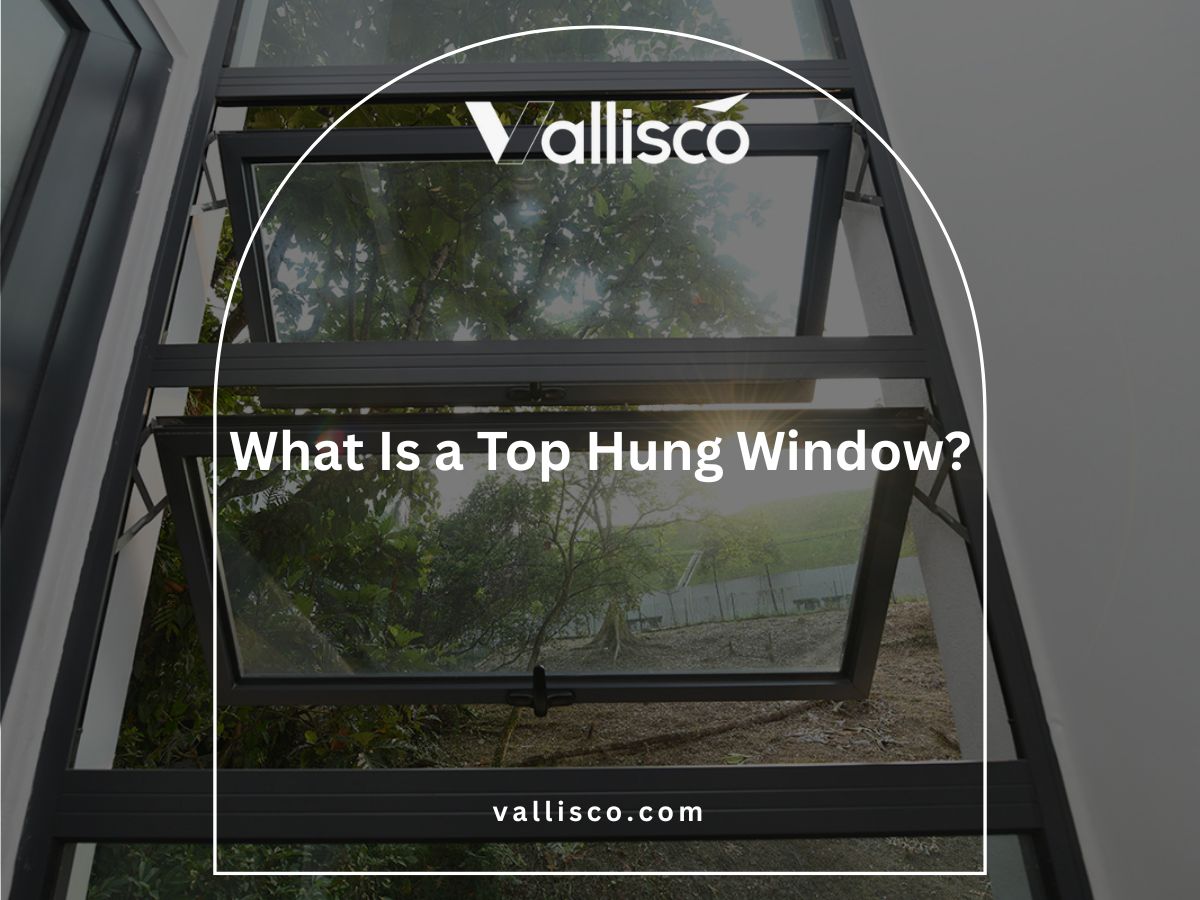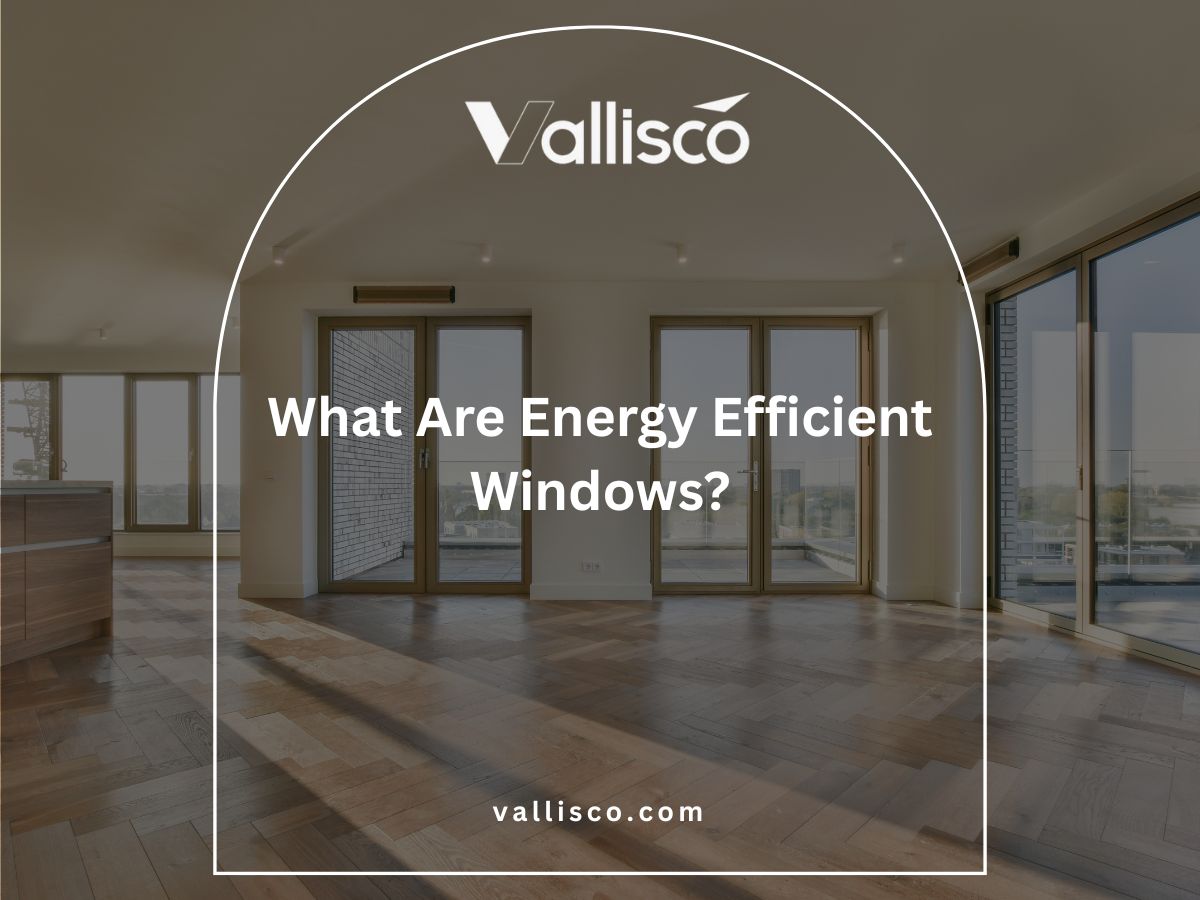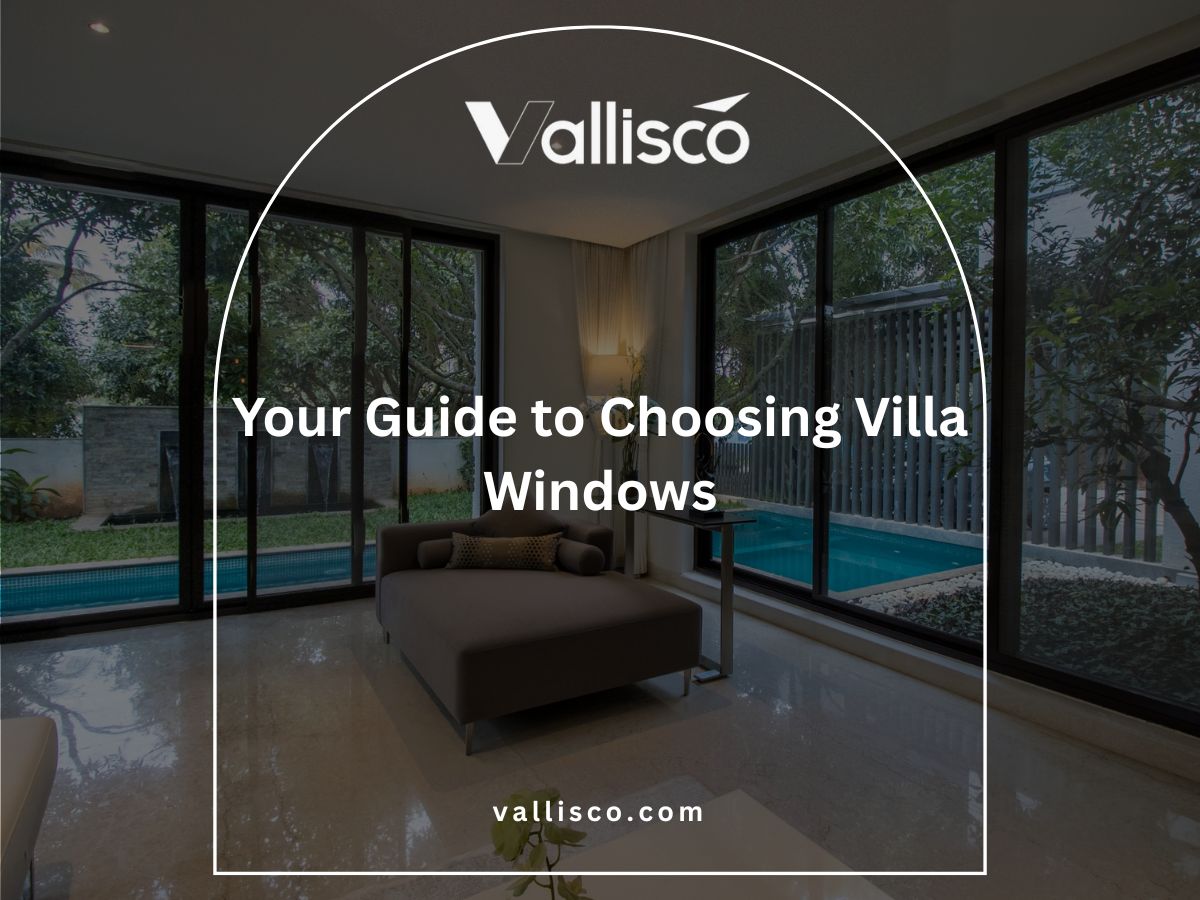One time, a client asked me to help with French doors for their new café. The style they picked looked like a great clean frame, big glass, nice handles.
But they didn’t know their area had strong winds and heavy rain. Those doors weren’t built for that. They would’ve leaked.
Luckily, we caught it before it was too late. But I’ve seen other people find out the hard way after the doors are already installed.
If you’re choosing commercial French doors right now, I get how tricky it can be. You want something that looks good, keeps people safe, and fits your budget.
That’s why I wrote this guide. I’ll walk you through everything how to pick the right frame, what glass to use, and which details really matter.
By the end, you’ll have what you need to make the right choice for your space without second-guessing it later.
So let’s begin!
1. What Are Commercial French Doors?
French doors are double doors with large glass panels that open from the center. You’ve probably seen them on patios at homes. Commercial French doors look similar but are made stronger for places like hotels, offices, and greenhouses.
These doors have thicker frames and heavy-duty hardware to handle frequent use. They also use safer glass and better seals to protect against weather and improve security. Choosing the right type makes a big difference in durability and performance.

2. Key Benefits of Using French Doors in Commercial Spaces
French doors aren’t just about looks. They can change how space feels and works. I’ve seen it happen with clients sometimes one change makes everything feel brighter, more open, and inviting.
Natural Light and Visual Appeal
One of the first things people notice is the light. French doors have large glass panels that let in more sunlight. This makes rooms feel bigger and less closed-in. You might also spend less on lighting during the day. A client once said their hotel lobby felt like “stepping into a vacation” after installing French doors. That stuck with me. Just changing the doors shifted the whole mood.
Improved Accessibility and Flow
Busy spaces need room to move. French doors open wide, making it easier for everyone. This works well in patios, outdoor dining areas, event spaces, and cafés where furniture moves often. I had a client add French doors between a breakfast room and garden patio. Before, the patio was barely used. After the change, it became their most popular spot.
Energy Efficiency (With the Right Glass)
French doors can help lower energy bills if you pick the right glass. Look for low-E glass, which reflects heat and keeps indoor temperatures steady. Double glazing has two glass layers with space between, trapping heat or cool air inside. In warm places like southern hotels or beach cafés, this setup keeps spaces cooler without overworking air conditioning.
Adds Property Value and Guest Appeal
Guests notice details. Doors might seem small, but they make a big impact. French doors add a clean, high-end look to entrances and help smaller hotels or rentals stand out. They can also increase property value over time. If you want an upgrade that’s practical and attractive, French doors are a solid choice.
3. Types of Commercial French Doors
Choosing the right commercial French door means thinking about both the material and how the door opens. I’ve seen clients save time and headaches by matching these features to their space and use. Below is a simple table to help you compare common types and pick what works best for your property.
| Type | Best For | Material/Operation | Key Features | Not Ideal For | Care & Maintenance | Notes / Experience |
| Aluminum | Coastal, humid areas, high moisture | Material | Rust-resistant, low maintenance | Heavy security needs | Easy to clean | Replaced warped wooden doors for beach café client no swelling. |
| Steel | High security, industrial spaces | Material | Very strong, heavier, higher cost | Lightweight applications | Requires sturdy frame | Used for secure back entrances; weight needs strong support. |
| Wood | Villas, inns, traditional settings | Material | Warm, classic look, needs upkeep | Wet or highly humid environments | Needs regular repainting | Villa owner loved the look; repainting every summer required. |
| Inward Swing | Larger interiors | Operation | Opens inside, takes room | Small rooms | Depends on interior clearance | Outward doors worked better for small restaurant seating. |
| Outward Swing | Tight interiors, patios | Operation | Opens outside, saves interior space | Areas with limited outdoor space | Weather seals important | Helped keep indoor space clear in tight restaurant layout. |
| Fixed & Operable Combo | Wide openings, galleries | Operation | One fixed panel, one opens | Need both doors fully operable | Less complex to maintain | Used in gallery for wide views with simpler use. |
| French Doors with Sidelights | Hotel lobbies, upscale offices | Operation & Material | Adds narrow side panels for extra light | Spaces with limited wall space | Extra cleaning needed | Brightened a hotel lobby significantly after installation. |
Selecting the right French door type helps you avoid future issues and match your space’s needs. Think about your environment, traffic, and maintenance before deciding. This approach saves time, money, and keeps your commercial property looking and working its best.
4. Key Features to Consider When Buying
Choosing the right commercial French door isn’t just about looks: many clients get caught up in finishes or colors and overlook important details like safety, weather resistance, and daily wear.
Frame Strength and Durability
- Thermally Broken Aluminum or Galvanized Steel Frames: These materials resist warping and handle heavy use. They also help with energy efficiency by reducing heat transfer.
- Frame Wall Thickness and Reinforcements: Thicker walls and extra supports add strength. Doors exposed to wind, heat, or frequent use last longer with these features.
Glass Options
- Tempered Glass: Breaks into small, less harmful pieces for safety. It’s a common choice in public spaces.
- Laminated Glass: Holds together when cracked, providing extra security. Ideal for areas where safety matters most.
- Double-Glazed Units: Two layers of glass with a space between improve insulation and reduce noise, helping cut energy costs and create quieter spaces.
Locking and Security Features
- Multi-Point Locking Systems: Secure the door at several points for stronger protection. Essential for busy or public entrances.
- Steel Reinforcements in Frames and Panels: Add extra resistance against forced entry, helping prevent break-ins and damage.
Weather and Energy Performance
- Quality Weatherstripping: Seals out drafts, rain, and dust to protect interiors and maintain temperature control.
- Water Barrier Thresholds: Stop water from seeping under the door during storms, crucial for exterior doors.
- Tested U-Values and SHGC Ratings: U-values show how well the door retains heat; SHGC ratings measure how much sunlight is blocked. These help you choose energy-efficient options.
Fire Rating and Building Code Compliance
- Fire-Rated Options: Doors that slow fire spread improve safety and meet legal requirements. Check if your building needs this rating.
- Compliance with NFPA, UL, or Local Codes: Following these standards prevents inspection problems and keeps occupants safe. One client nearly failed because their doors lacked proper certification.
When you pick commercial French doors, focusing on these features helps avoid costly issues later. It’s about finding a door that works well every day and protects your space for years.
5. Common Applications of Commercial French Doors
You might be surprised how many places commercial French doors fit well. I’ve seen them brighten big hotels, cozy inns, modern villas, and even small greenhouses. Their blend of natural light, space-saving design, and strength makes them a popular choice.
Hotels and Inns
French doors often lead to patios, pools, or gardens in hotels and inns. They also work well as lobby partitions or balcony entrances. A hotel client once told me guests loved how the doors made poolside rooms feel larger and more connected to the outdoors.

Villas and Luxury Homes
In villas, French doors create smooth transitions between indoor and outdoor living spaces. They’re great for entertaining and opening up rooms. One client shared that their guests often comment on the wide glass doors that open onto a terrace, adding a welcoming feel.

B&Bs and Guesthouses
Even smaller places like B&Bs benefit from French doors. They bring in light and charm to compact areas, whether for room entrances or courtyard access. I’ve seen tiny guesthouses brighten up instantly after switching from solid doors to glass-panel French doors.

Greenhouses and Sunrooms
These spaces need good ventilation and plenty of light but also require weather resistance. I recommend aluminum or vinyl frames here because they resist rust and handle temperature changes well. It keeps the greenhouse or sunroom comfortable without sacrificing durability.

6. Installation and Maintenance Tips
Getting commercial French doors is exciting, but how you install and take care of them makes a big difference. Small mistakes can cause big problems later, like leaks or doors that don’t close right.
- Pre-Installation Measurements: Make sure to measure the width, height, and wall thickness carefully before ordering. If you miss these, you might have to wait for new parts, which slows down the whole project.
- Proper Threshold and Drainage: Check that the bottom of the door slopes so water can drain away. Without this, rain might pool and leak inside, causing damage.
- Professional Installation Recommended: It’s best to have a pro install your doors to get everything sealed and level. Bad installation can cause drafts or doors that don’t shut properly.
- Manufacturer’s Installation Guide: If you install the doors yourself, follow the instructions exactly. Doing it wrong can leave gaps that let cold air in.
- Hinge and Lock Maintenance: Put oil on hinges and locks once a year to keep them working smoothly. If you don’t, they might squeak or get stuck when you least expect it.
- Cleaning Tips: Clean glass and metal parts with a soft cloth and gentle cleaner. Strong chemicals can damage the door’s finish.
- Wood Door Care: If your doors are wood, repaint or seal them every year or two. This protects them from sun and rain and keeps them looking nice.
A little care during installation and after makes your doors last longer and work better. Taking these steps saves time and money in the long run.
7. Final Checklist Before Purchasing
Before you place your order, take a moment to double-check a few key points. Rushing can lead to costly mistakes, especially on big projects. A quick checklist now can save you stress and extra work later.
Material and Finish Match Your Project Style
Make sure the door fits the look of your building. Consider the color, frame style, and handles carefully. For example, a modern café might use aluminum frames for a sleek look, while a countryside B&B might prefer warm wood tones. One client chose glossy black doors for a bakery, and they still get compliments two years later.
Safety, Fire, and Code Standards
Check local building codes and fire safety rules like NFPA or UL standards. This is especially important for hotels, inns, and public spaces. Vallisco reviews all doors for performance certifications to meet both project needs and compliance requirements.
Glass Type and Energy Ratings
Look for glass that suits your climate. Low-E glass or double glazing helps reduce energy bills by keeping heat in or out. A restaurant owner told me switching to low-E glass lowered indoor temperatures and cooling costs. Ask about U-value (heat retention) and SHGC (solar heat control) these numbers matter for comfort.
Warranty and After-Sales Support
Know what your warranty covers and for how long. Check if it includes hardware, glass, and finishes. A solid warranty gives you peace of mind against unexpected issues. Vallisco offers detailed warranty terms and ongoing support, so you won’t be left in the dark after installation.
Conclusion
That café client? They ended up with strong, weather-rated aluminum French doors and told me business actually picked up because the space felt more open and welcoming.
Now you have the same chance to make a smart, informed choice.
We covered materials, glass types, safety rules, and even real-life tips from installs.
Need help deciding what works for your project?
Contact Vallisco todaywe’re ready when you are.
Learn More: Recommended Reads
Want to see more products? We’ve got plenty of options that might just be the perfect fit for you:
Still haven’t found what you’re looking for? Don’t hesitate to contact us. We’re available around the clock to assist you.







